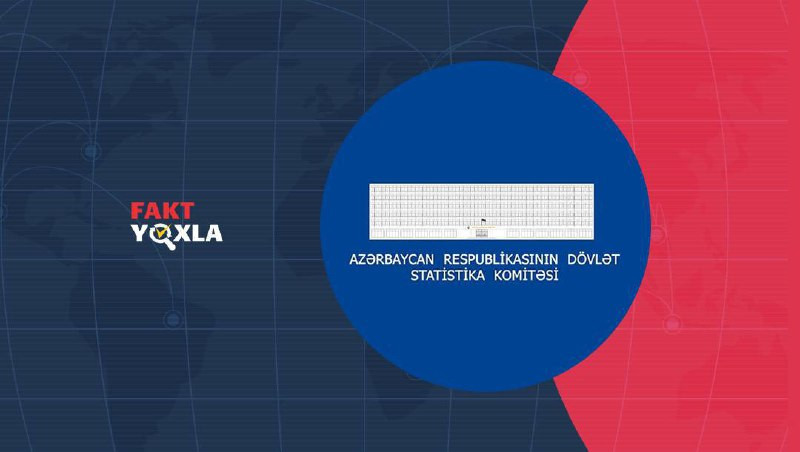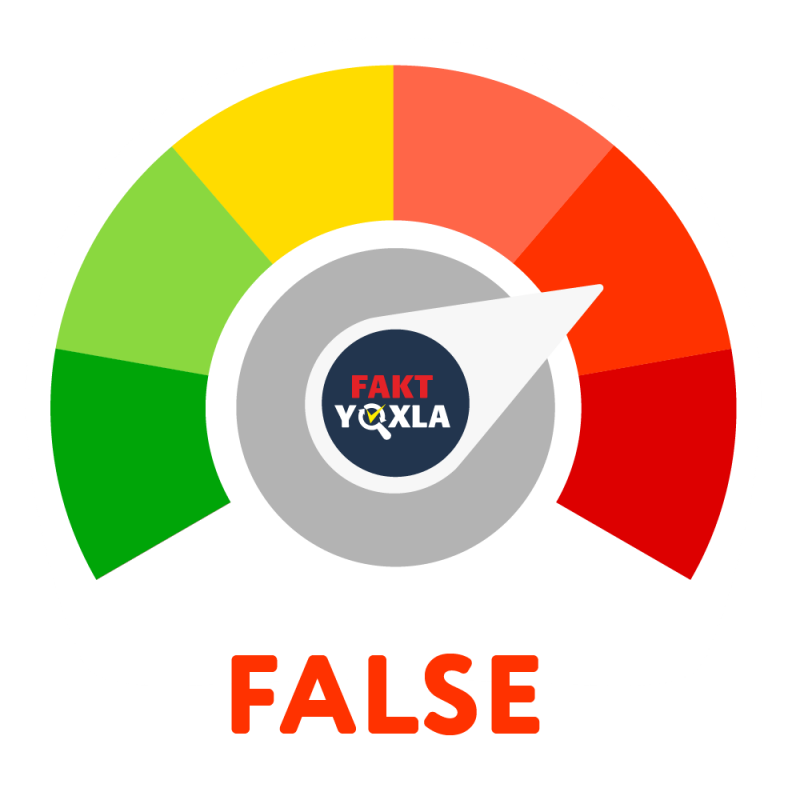The State Statistical Committee (SSC) announced the food balances of Azerbaijan for 2021.
The food balance is a system of statistical indicators characterizing the main types of agriculture, the sources of raw materials and food resources, and the directions of use of those resources.
The food balance reflects indicators related to the country's production, import, and consumption of important types of products. Those indicators allow for measuring the level of provision of important types of products of domestic production of the country.
In 2021, 1 million 837 thousand tons of wheat were produced in Azerbaijan. Although last year's production increased by 20 thousand tons compared to 2020, it was 200 thousand tons less than wheat production in 2018 and 2019.
The volume of wheat imported by Azerbaijan was 1 million 148 thousand tons. This means that the country's wheat self-sufficiency in 2021 was equal to 61.5 percent. In the previous two years, this indicator was 57.1 percent.
Although Azerbaijan's total wheat supply is almost 40 percent dependent on imports, it is more dependent on food wheat.
Government officials stated that Azerbaijan can cover 25 percent of its needs with grain used in the production of flour.
In 2021, an increase in the production of another cereal crop, barley, was recorded. For the first time since 2015, the production of barley in the country has exceeded 1 million tons, and the country is fully self-sufficient in barley through domestic production.
Azerbaijan's annual barley import was only 16,000 tons, and last year it was even able to share its share in exports.
The volume of exported barley was 36 thousand tons. The barley produced in the country is mainly focused on two areas. 1 million 31 thousand tons of it were used as fodder in animal husbandry. 58,000 tons of barley were used for beer production.
In 2021, corn production in the country was 104 thousand tons. This is 10,000 tons more than expected in 2020 and means that corn production returned to 2019 levels. The share of local production in corn supply has exceeded 90 percent.
At the same time, this indicator was close to 90 percent in oat production. That is, it is clear from the figures related to grain supply that, although local production is satisfactory in the supply of other grain products, dependence on imports continues seriously in the supply of wheat.
The figures released by the SSC also allow for assessing the current situation related to animal husbandry. Per capita consumption of beef in the country has decreased for three years in a row.
In 2018-2020, per capita beef consumption in Azerbaijan amounted to more than 16 kilograms. In 2021, this indicator decreased to 15.9 kilograms.
Instead, poultry consumption appears to have increased during that period. So, in 2018-2020, the average annual consumption of poultry meat in the country was 14.7 kilograms per person, and in 2021, this figure increased to 15.4 kilograms.
Per capita consumption of sheep and goat meat in the country increased from 8.9 kilograms to 9 kilograms in 2021, and fish meat consumption increased from 7.3 kilograms to 7.4 kilograms. Per capita pork consumption in Azerbaijan remains unchanged - 1 kilogram.
Another noteworthy point is the increase in the consumption of milk and dairy products in the country during the pandemic. While 246 kilograms of milk and milk products were consumed per person in Azerbaijan in 2019, this indicator was 257 kilograms in 2020 and 253 kilograms in 2021.
In 2021, 145 thousand tons of beef were produced in Azerbaijan. This means an increase of 1.4 percent or 2,000 tons compared to the previous year. Instead, a significant decrease in the volume of imported beef was recorded in 2021.
In the previous four years, Azerbaijan imported more than 20,000 tons of beef every year. In 2021, this indicator was only 12,000 tons. In this regard, in 2021, Azerbaijan's beef self-sufficiency index reached the maximum level of 92 percent in recent years.
There was no significant change in the production of sheep and goat meat. In 2021, 87,000 tons of meat were produced, as was the case a year ago. The self-sufficiency level of Azerbaijan with sheep and goat meat is 98 percent. As for pork, only 500 tons of pork were produced in 2021. Additionally, 10,000 tons of pork were imported. That is, pork production in the country can meet only 5 percent of the demand.
In 2021, a significant increase in poultry meat production was recorded. While 115 thousand tons of poultry meat were produced in 2020, this indicator increased by 9 thousand tons in 2021 and exceeded 124 thousand tons.
Before 2020, this indicator was lower - an average of 105,000 tons.
On the contrary, a decrease of almost 2,000 tons was observed in the production of fish meat. In 2021, 59,000 tons of fish meat were produced in Azerbaijan. This is the lowest figure in the last five years. The level of the country's self-sufficiency in fish meat has also decreased from 82 percent to 78 percent.
Last year, the level of self-sufficiency in potatoes, one of the main food products, decreased. In 2020, local potato production in Azerbaijan was enough to meet 90.6 percent of the demand. In 2021, this indicator was 88.8 percent. Last year, per capita potato production increased compared to previous years and reached 84.2 kilograms.
During the year, the volume of potatoes produced in Azerbaijan reached 1 million 62 thousand tons. For three years in a row, the country's annual potato production has exceeded 1 million tons. However, in 2021, the potato import of Azerbaijan reached the maximum level - 227 thousand tons.
As for vegetables, fruits, and melon products, Azerbaijan has traditionally been able to provide itself with these products. Last year, the country's level of self-sufficiency with vegetables was 106 percent, with fruits 123 percent, and with melon products 103 percent.
Thus, last year, the demand of the population for more expensive beef was replaced by relatively cheaper chicken meat. Although Azerbaijan can fully provide itself with fruit and melon products and barley, the country's dependence on wheat imports was close to 40 percent.












